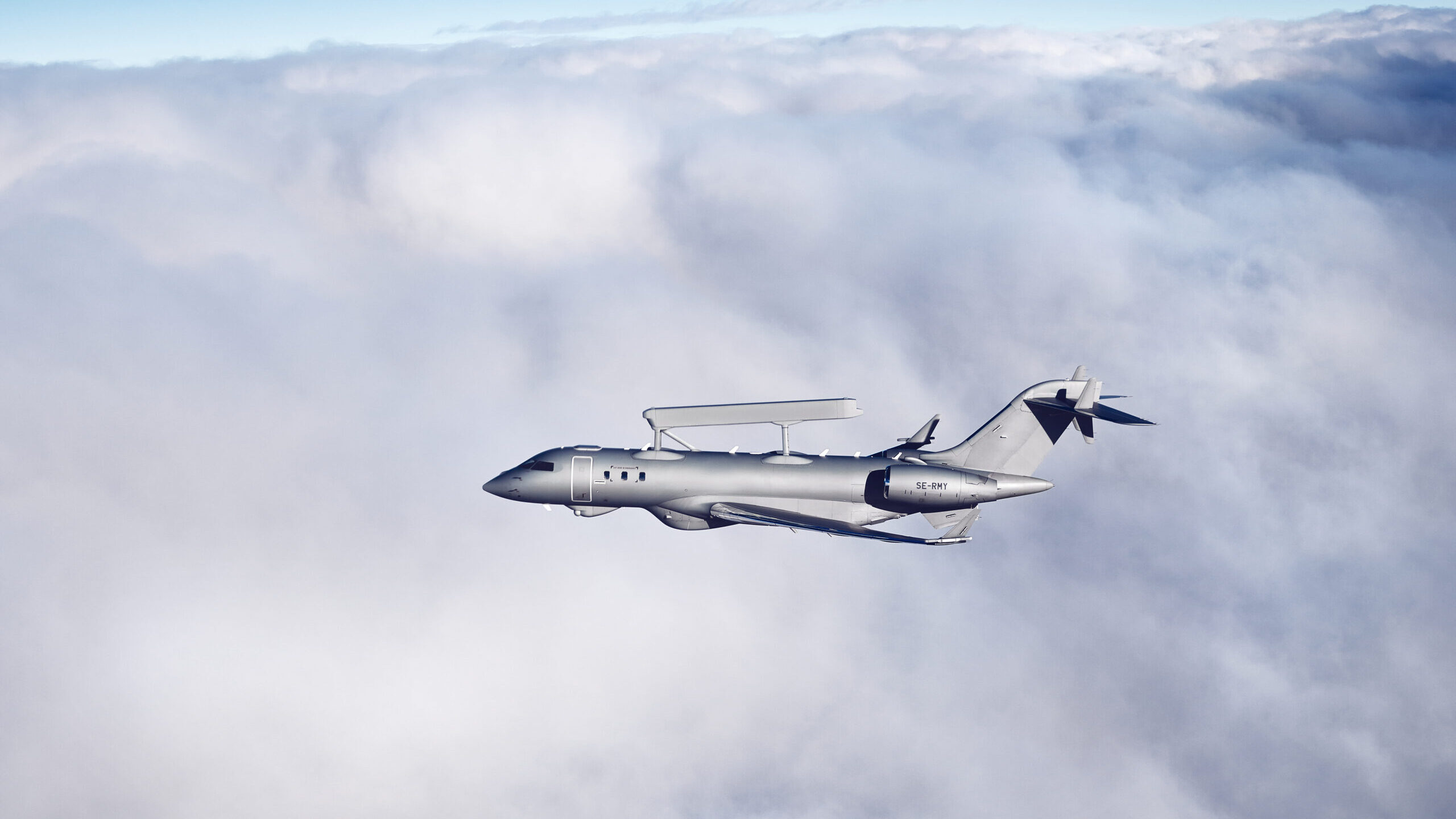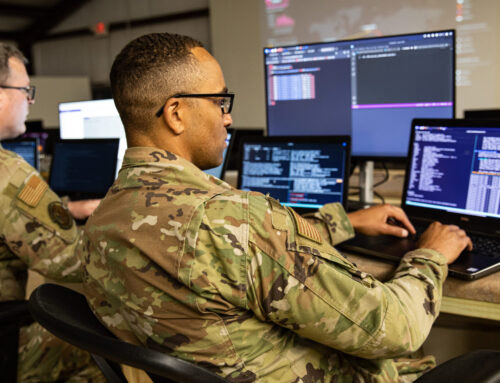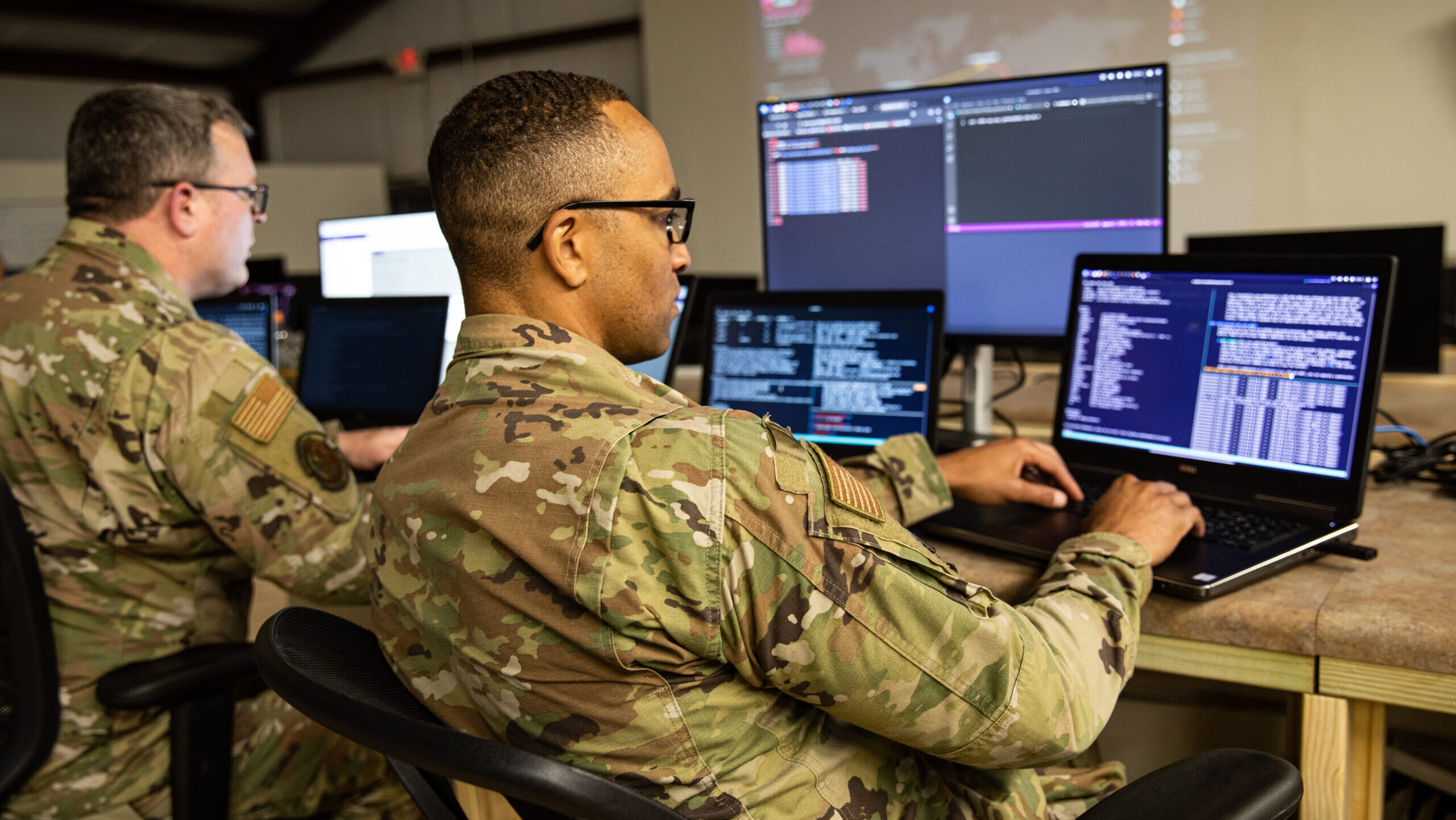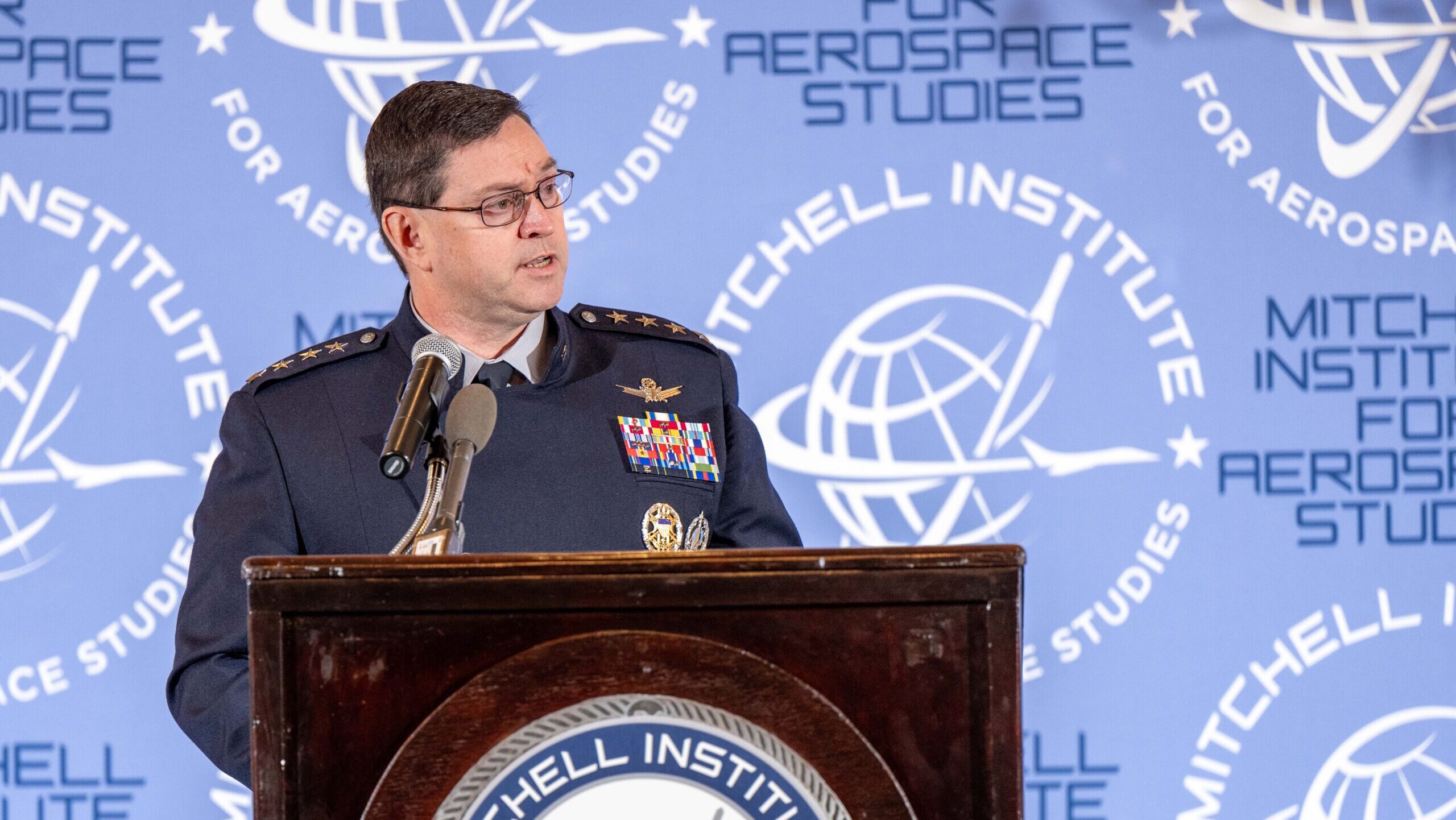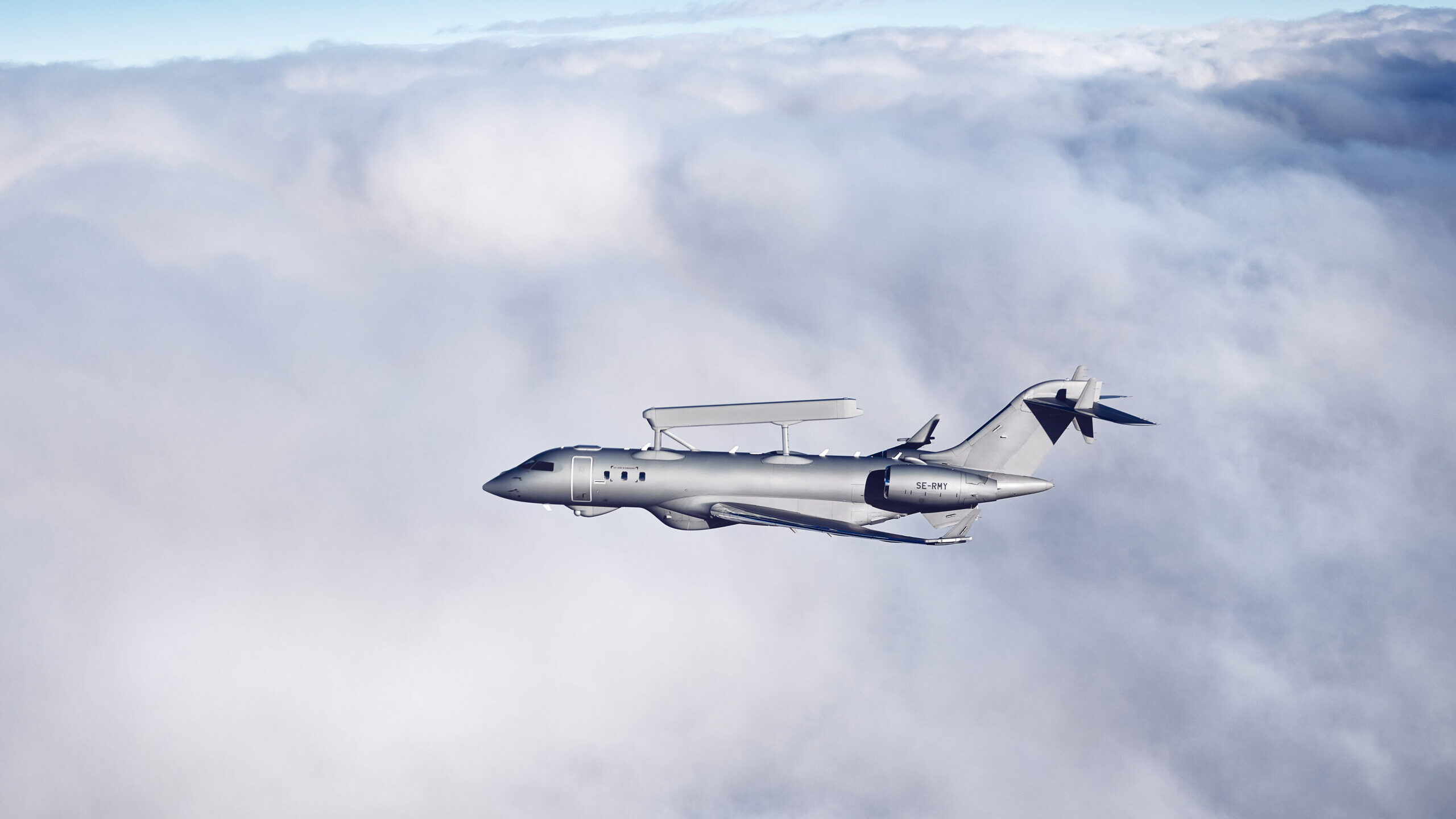
Saab CEO Micael Johansson told Breaking Defense that the company hopes to generate interest from Germany in the GlobalEye spy aircraft. (Saab)
BELFAST — Swedish manufacturer Saab is one of Europe’s largest defense companies, famed for the development and manufacture of Gripen fighter jets among a wide variety of other major platforms across air, land and sea domains. The company also has a special interest in the US, largely due to it supplying aft fuselages for the Air Force’s T-7A Red Hawk advanced trainer program, while a new Michigan-based shoulder-fired munitions final assembly line is scheduled to begin production next year.
US and European security ties are beginning to fray, however, as new leadership in Washington insists the continent drive up defense spending, tells the Munich Security Conference that Europe’s primary threat rests “from within,” and looks set to be much less of a reliable ally going forward. Against such a backdrop the implications for Europe’s defense industry could be profound.
Breaking Defense sat down with Saab CEO Micael Johannson on Sunday on the sidelines of the Munich Security Conference to discuss transatlantic tension, the potential for a European “coalition of the willing” to fund major, collaborative defense projects, the state of Saab’s weapons production and plans to flight test optionally manned and unmanned Swedish future fighter demonstrators over the next four years.
This interview has been edited lightly for length and clarity.
BREAKING DEFENSE: Big picture, a consensus seems to have emerged over the last three days that the US is less of a reliable security partner in Europe. What are the implications for Saab or what will the ripple effects be for the business?
MICAEL JOHANSSON: First of all, I do think that a strong transatlantic link is still important, and I don’t think we should sort of jump into too many conclusions [or] we should give up on that obviously. Since we have operations in the US I don’t think that is so much affected by this. This is a local business. Locally perceived, important stuff for the US DoD and the defense forces in the US, and we are still pushing to grow that. We’re building a new facility in Michigan to manufacture munitions and support weapons, of course, that’s still absolutely in play.
It’s more on a political level, to decide, okay, “how strong do we have to be in Europe?” We come from a peace dividend and if we didn’t sort of hear the wake up call a number of years ago, when the [Ukraine] war started, or even back in 2014 [when Russia invaded Crimea] I mean, now we should sort of understand that we need to do more in Europe, nation by nation, of course, but also as part of the alliance, being a strong pillar in NATO.
I think [this is] important and I wish that we could sort of get our act together to do a few more things together in Europe, to create scale and identify a number of flagship projects that we need as capabilities [from the] European perspective, and also being aligned with what NATO needs going forward for a regional defense, but also as a strong sort of deterrence capability [in] Europe.
We can identify those projects. We all talk about integrating air and missile defense systems. We have great defense industries that would support that. We have unmanned, collaborative combat aircraft. We have all these things with critical underwater infrastructure [threats] that we have to manage somehow. We can do more on the sensor side, on [the] space side, we could do more on sovereign security of supply when it comes to munitions and powder factories and stuff like that. How do we get there is the problem.
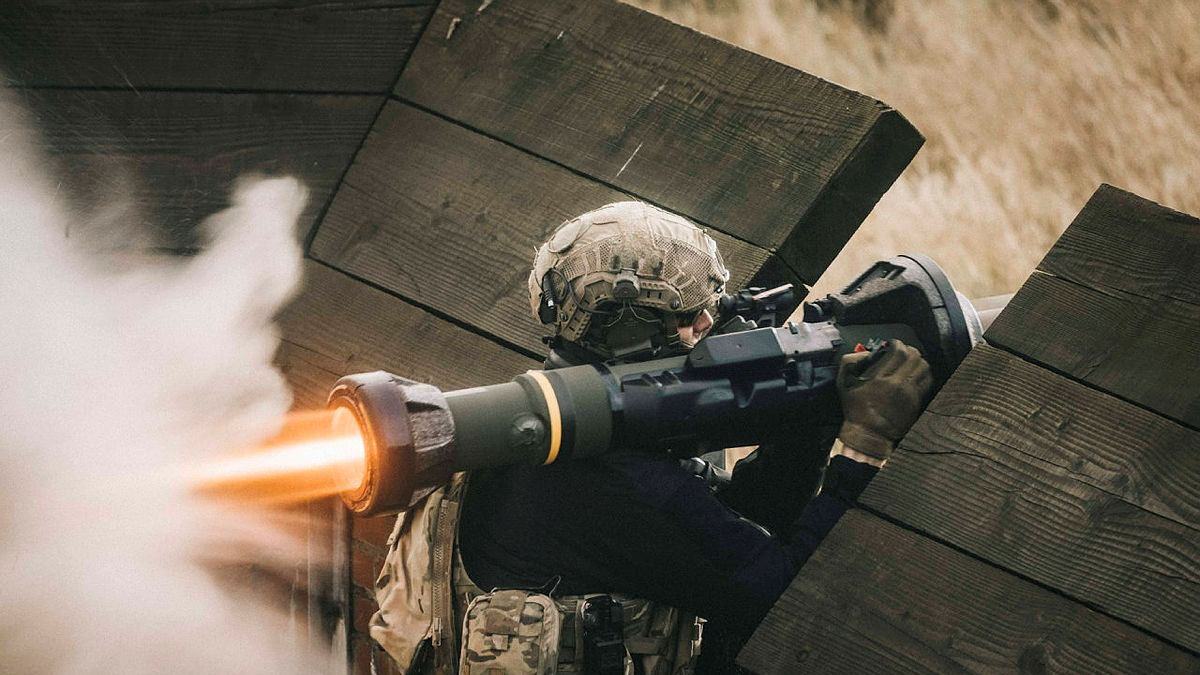
A British Army Pathfinder Regiment soldier test fires Saab next generation light anti-tank weapon or NLAW (UK MoD)
The European Commission was talking a couple of days ago about having a deficit break by triggering an emergency clause [effectively allowing governments more flexibility over defense spending]. Is that the right path to take?
If this sort of triggers nations within Europe to take the next step to spend more then I think that is probably a very good way to go, nation by nation. I’m not sure that will help the collaboration issue. I’m more looking at our Commission having defense and security really high on the agenda. We have a new defense commissioner [Andrius Kubilius] that is writing his white paper together with Kaja Kallas [European Commission vice president] and [come] 14 March, we will see what that includes. I think theoretically, these are good initiatives to try and create some sort of European defense industrial program, with those flagships, the projects that I mentioned as examples.
But then of course we need all the countries agreeing, by consensus, 27 of us, that we want to put money into this, substantial money. We are not talking about €1.5 billion ($1.56 billion) in Europe [the proposed budget of the European Defence Industry Programme]. We’re talking hundreds of billions of euros, I think, over a time period to do this. Will that happen? I don’t know.
But if that is not manageable from an EU Commission perspective, we need to see a coalition of the willing, because when I look upon this, it seems countries have different views of the threat environment. I mean, it’s obvious in the Baltic states, in Poland, maybe Germany, Sweden, Finland, maybe a few others that really want to, sort of step up and do things. (Days after Breaking Defense spoke with Johansson the Financial Times reported that the European Union is considering reallocating €93 billion of unused COVID recovery funds to the defense sector.)
Saab has shared plans to hit a production target, across all of its ground combat weapons, of 400,000 units per year from 2025. Is that on track?
Yes, we are on par with what we expect in terms of output, and we have a huge backlog now to execute also and so that will come into play at the end of this year.
Are you able to give a figure for 2026, will it level out or increase?
It will go beyond [the 2025 production rate] but I won’t specify a number It will happen when our [Carl-Gustaf M4 shoulder launched recoilless rifle] facility in India comes into play in 2026 and also in the US [Michigan munitions facility] at the end of 2026. Production increase is also planned with our missile capability, short range air defense capability, and also sensor capability. That’s why we opened a new [Giraffe 1X air surveillance radar] facility in Fareham to be able to manufacture, or start to manufacture the 1x at large scale. So we are investing heavily, a bit more front loaded than we assumed a couple of years ago, but it’s the right thing to do.
Pal Jonson, Sweden’s defense minister, has said the government expects to launch a future fighter “inquiry.” Is that a good step politically to also tie in with future fighter activities from the Swedish Armed Forces and studies already underway?
It’s public news that there is a concept program ongoing where the alternatives are, continue the way we do it today which is in itself, of course, an ecosystem of companies joining to support us as the prime. The other option is to join, and I am not saying SCAF [Future Combat Air System] or GCAP [Global Combat Air Programme] but finding an international partnership, but it is very important to retain the OEM [Original Equipment Manufacturer] capabilities that we have.
I can’t foresee that we will throw that out the window after nine decades of cost efficient, highly performing platforms being developed and manufactured. The third alternative would be to buy something off the shelf, which I have a hard time seeing, that Sweden would actually turn that way because that would mean lots of cost and infrastructure effects and stuff like that. They will do some sort of assessment on the three alternatives. I don’t know when exactly they will come to a conclusion.
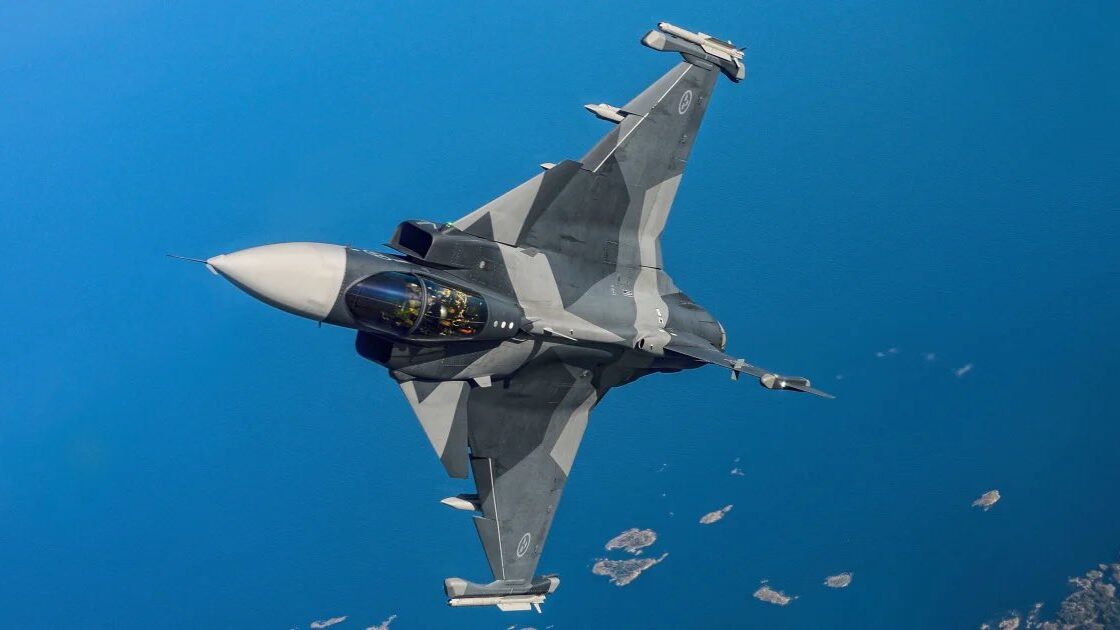
Sweden could decide on which procurement path to take for a future fighter designed to replace Saab’s Gripen fighter jet earlier than expected, company CEO Micael Johansson told Breaking Defense (Saab)
We are supporting the program. We’re doing concepting and we will fly things over time and they stated between 2028 and 2030 they have to take this decision. I think it will happen a bit earlier, but that’s my personal view, we need to settle which way we go because that’s good for us, that’s good for Sweden, good for the [NATO] alliance. Of course there will be assessments, but I cannot see that there will be a request for information or something like that, sent out [to industry].
Do you think we will see anything flying soon [from Saab on the future fighter concept phase]?
Absolutely we will definitely fly things.
Manned or unmanned?
Unmanned [flight testing around] 2027-2028. Before that, we will probably fly something optionally manned, and maybe partly show off some mission sort of capability that would be more AI than pilot-oriented.
The AI package would be developed in-house or from a start up?
We have a collaboration with Helsing. We work with them, and we also have an equity stake. So of course, we will use AI from the company broadly. But of course, we’re looking into what can support more efficient missions when using AI agents. I won’t go into details around that.
Are you happy with the level of funding provided for future fighter related activities?
We are on contract for lots of these things. There will be more to come.
Touching on the GlobalEye joint Nordic purchase idea, do you think there will be an agreement soon?
I hope so. It’s mainly sort of a discussion between the politicians, MoDs and defense forces, around [the question of] what sort of capability do we need? Do we need to add one or two platforms and/or if Finland or Denmark would join that to start with. Of course, that would be great and I think we need that capability, not only for the Nordics, but also the Arctic perspective, to be able to cover that.
As the UAE deal is complete, what are your GlobalEye export priorities?
I think there’s an interest from France. Hopefully we can get the Germans interested. I’d love to see it as an interim solution at least for the NATO iAFSC [initial Allied Future Surveillance and Control] as they call it. I know the E-7 has been selected, but there’s some sort of schedule problem there, I think, so we are offering [GlobalEye] if there’s an interest, but then we go nation by nation. We have some interest or potential customers that are interested in Asia-Pacific region, but also Middle East. There are quite a few sort of leads or campaigns [happening].
Has Saab made first Gripen E deliveries to Satenas air base yet?
We have delivered [aircraft] to the FMV [Swedish Defence Materiel Administration] test center.
Given news around a possible F-35 sale to India, do you see that as a competitive issue for the Gripen campaign?
We have a very competitive opportunity. We’ve said to them that we’re prepared to more or less build a small Linköping [Gripen’s Swedish manufacturing base] in India, to transfer technology, build production, and also knowledge transfer for a platform like Gripen [is important]. It has to be a highly performing platform, which it is and I think it’s suitable for what they need. But then again, I can’t judge politically how discussions are going.
Is there a commensurate type loss on T-7 for Saab, in line with Boeing’s losses?
It’s not proportional at all to what Boeing has written off, which is public information and I won’t give you a number, but is that substantial? Absolutely not. I think the investors have sort of understood that if you look upon the combination of aerostructures which has not been giving us black numbers over the last few years, but will go into a positive sort of scenario now — [when you consider] T-7 and then Gripen — we’ve always said that it should be sort of high single digit numbers [for profitability]. They’re now being pushed down a bit, and you are roughly at 6 percent I think, 5.9 percent last year for aeronautics. So that gives you a feeling.


